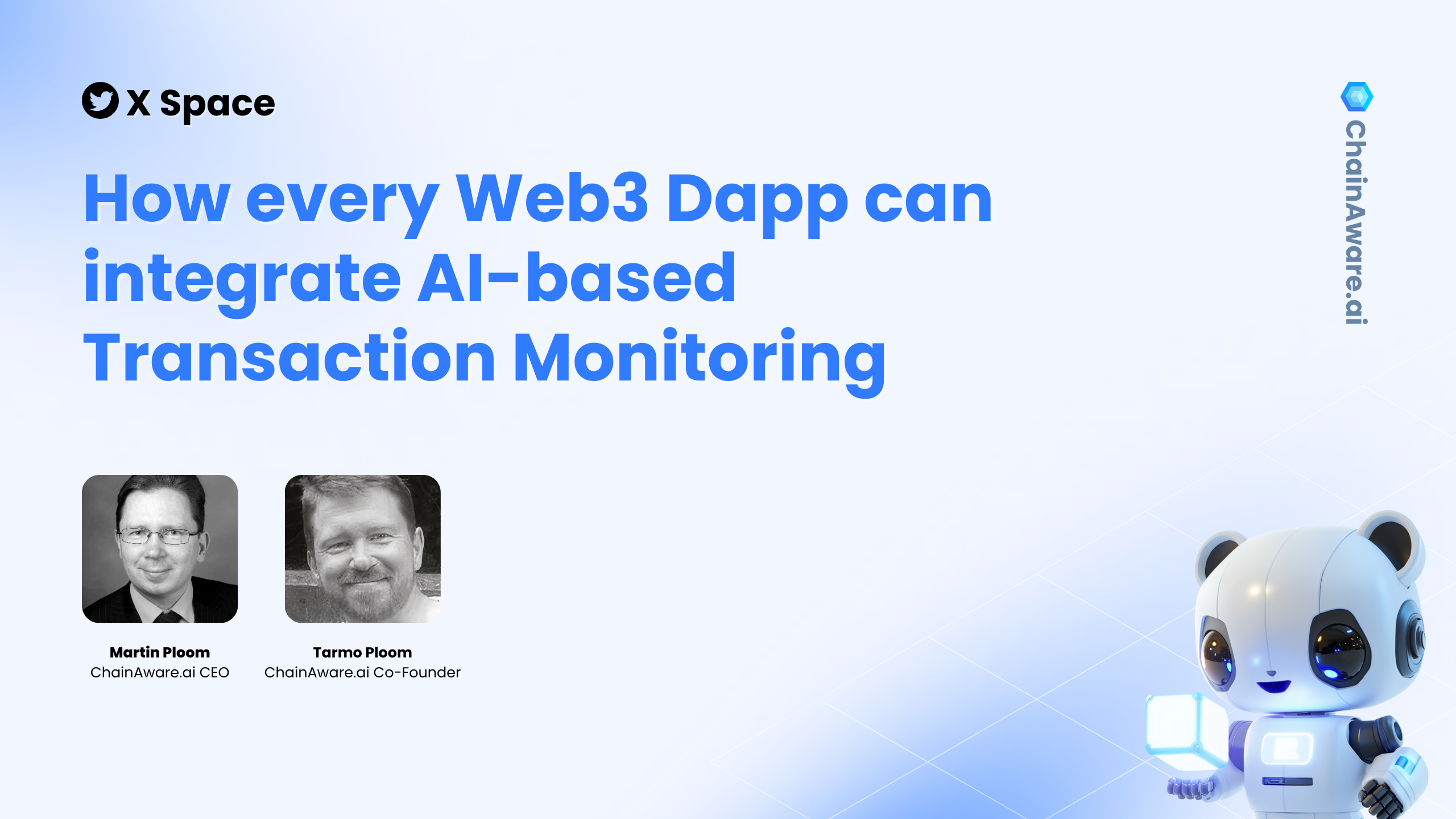In our latest X Space, we delved into a nuanced conversation about anti-money laundering (AML), transaction monitoring, and how these elements fuel trust in Web3. We unpacked real-world applications, revealed behind-the-scenes strategies, and demonstrated why tackling fraud head-on is paramount if we truly want to see decentralized finance thrive. If you’re looking for insider insights without the fluff, this article is for you.
For the full conversation, you can listen to the entire X-Space recording via this link.
Why AML and Transaction Monitoring Matter in Web3
We often hear about the importance of good user experience, but how many of us stop to consider the risks lurking behind an unassuming wallet connection? AML and transaction monitoring, long familiar in traditional banking, have become pivotal in Web3. Think of it as having motion-sensitive lights in your yard: the moment something or someone suspicious moves, you’re alerted. This proactive stance keeps fraudulent activities at bay—no more frantically trying to reverse illicit transactions after the fact.
The conversation also highlighted a critical point: in a decentralized environment where transactions are largely irreversible, it’s not enough to have static rule-based checks. AI-powered monitoring adds a predictive element, giving platforms the ability to forecast mischief before it occurs. That’s a game-changer for Web3 businesses aiming to maintain trust.
Our Approach: AI-Powered Solutions
We introduced the idea of predictive fraud detection, tools that don’t just tell you fraud happened, but warn you it’s about to happen. Think of this like a weather forecast for suspicious activity. By analyzing on-chain patterns and user behavior, we can spot red flags that point to potential rug pulls or money-laundering attempts. Once identified, the system can then deny wallet connections or trigger additional security checks, effectively stopping problems before they start.
Key advantages of AI-driven transaction monitoring include:
- Continuous Analysis: Real-time updates mean you’re not just reacting to yesterday’s hack attempts.
- Adaptive Predictions: The algorithm learns from new data, refining its fraud indicators over time.
- Scalable Protection: Whether you’re a lean NFT startup or a large DeFi platform, you can scale up or down without gutting your resources.
Staying Ahead with Real-Time Analytics
On top of preventing fraud, AI insights also create fresh marketing opportunities. By analyzing user intentions, platforms can understand not just who is visiting them, but why. You can tailor marketing messages to users who show a high likelihood of exploring lending protocols or NFT marketplaces, much like customizing a dinner menu for each of your guests.
Our speakers stressed the ease of integrating a simple pixel into your website, akin to adding a “smart lens” that observes user patterns in real time. Once embedded, it constantly compiles actionable data you can feed into marketing campaigns, compliance checks, or strategic planning. Why burn resources on blanket advertising when you can laser-target users showing genuine interest?
Simple Steps, Big Results
- Install a Pixel – A snippet of code added via Google Tag Manager to begin monitoring.
- Receive Alerts – Get real-time flags on suspicious wallets or abnormal transactions.
- Take Action – Choose to block suspicious addresses, ask for KYC, or run deeper checks.
- Optimize Your Strategy – Use the data to refine user outreach, personalize marketing offers, and maintain a secure ecosystem.
Metaphorically, it’s like fencing your property line, adding security cameras, and also running a friendly neighborhood watch. You’re not just keeping burglars out; you’re also welcoming genuine visitors more effectively.
Conclusion
Our recent X Space underscored a hard truth: trust in Web3 depends on safeguarding user funds and deterring bad actors. The solution lies in proactive measures, AI-powered AML and transaction monitoring, that block fraud in real time, rather than merely analyzing it after the damage is done. By combining these predictive security tools with smart, data-driven marketing, Web3 platforms can offer both peace of mind and personalized user experiences.
Remember, the full discussion dives deeper into specific use cases and real-world examples, so don’t forget to listen to the recording via the link above. In the meantime, consider how a forward-looking approach to fraud prevention might just be the catalyst your project needs to thrive in an ever-evolving decentralized landscape.







